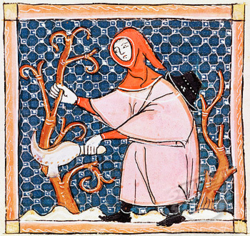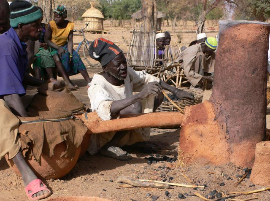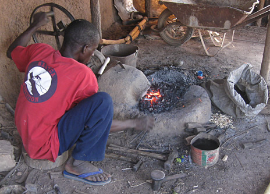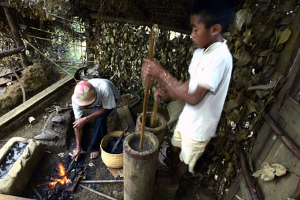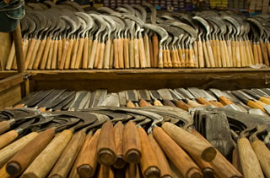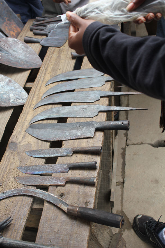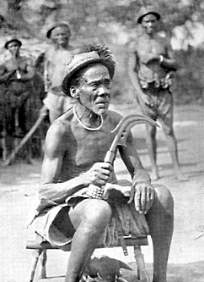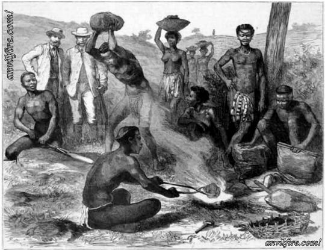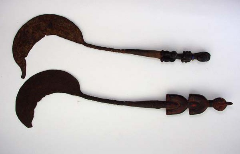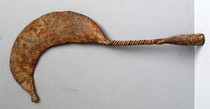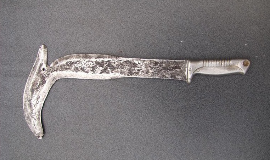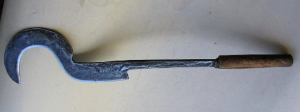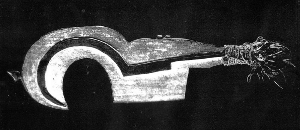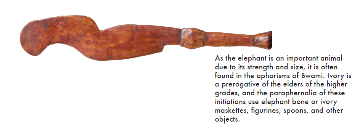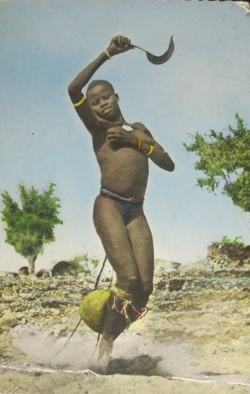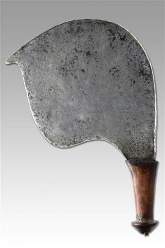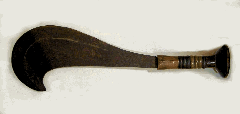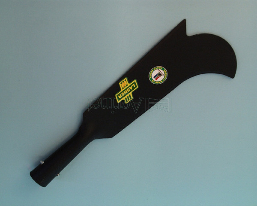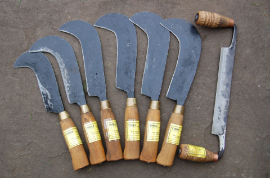African billhooks
The peoples of Africa have long had a tradition of forging iron and steel blades. Most famous are the smiths of the Mangbetu tribes of Zaire, formerly part of the Belgian Congo. Many hundreds of their 'trombash' have found their way into private collections in Europe and the USA. Although billhook shaped, they are not tools as such - they served more as money, weapons and badges of rank.
TFSR (Tools for Self Reliance), a British Charity that sends container loads of unwanted tools to poorer African countries no longer sends billhook - today it imports and sells billhooks made by local blacksmith in Tanzania in the UK.
In South Africa the Lasher tool company now makes and exports to the UK a wide range of edge tools (see below).
Many African countries have their own distinctive pattern of 'billhook' and 'sickle' types of tools; many used for cermony and well as having a practical purpose... With the changes to country names and borders in the 20th and 21st centuries, placing the origins of some of these tools can be difficult.
The variety of blade shape and decoration of the 'trombash' (above) seems only limited by the imagination and the skill of the smith. Handles may be in hardwood, often bound with woven wire, or ivory. The workmanship is extraordinary, the more given the primitive forges and tools used (see below)..
